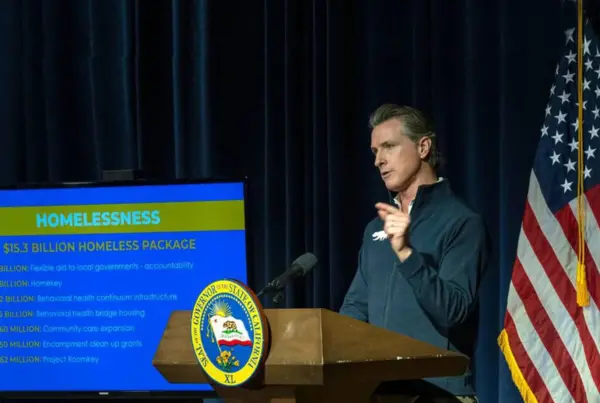With the cases of opioid-related overdoses surging, the fentanyl crisis has become an epidemic in the US. Despite increased security cooperation between the US and Mexico, Republicans and Democrats continue to disagree on how to deal with this crisis. The drugs continue to pour over the US southern border and Mexican cartels are mainly to blame. How many more must die before the US and Mexico find the right strategy against the powerful Mexican drug cartels?
Diana Mautner Markhof, 25 July 2023
Russian version | Spanish version
On 22 June 2023 Mexican authorities found Gabriel Trujillo’s body in the Mexican state of Sonora. Trujillo was a 31-year-old botanist and Ph.D. student at the University of California, Berkely. Trujillo was in Mexico researching a flowering shrub known for preserving water called the buttonbush.
According to Jay Armes III from Armes International Investigative Services, Trujilla had become the latest casualty in the Mexican cartel war raging in the country’s northwest state of Sonora, which to date has had 518 reported murders through May 2023. Since the arrest of Joaquin “El Chapo” Guzman, the kingpin who controlled much of the illegal drug trade across the western hemisphere for close to three decades, the factions of the Caborca Cartel and the Sinaloa Cartel are at war. At the heart of this war is control of the fentanyl drug trade, a multi-billion dollar ‘business’.
“At half a trillion dollars — $500 billion — that makes the cartel business and the drug traffic between Mexico and the US larger than Walmart’s yearly revenue, to put it in perspective. So this cartel drug trade is larger than our largest companies.” (Senator David Perdue ,R-Ga., US Senate Caucus on International Narcotics Control, 11 June 2019).
Synthetic opioid-related deaths in the US have doubled for chilren and young adults (aged 10 to 19) in past years, according to a recent study published by the US Center for Disease Control and Prevention. This sad fact is also due to easy online access to these killer drugs. Tens of thousands of adolescents have lost their lives as a result of an overdose of a counterfeit pill (Oxycodone) laced with fentanyl purchased online.
Substance-related deaths have increased to over 100 000 in the US annually, with 70 000 resulting from synthetic opioids, 90% of which are fentanyl-related deaths, making it the leading cause of death in the US for those between the ages of 18 and 45.
The US Drug Enforcement Administraiton (DEA) has reported that a kilogram of pure fentanyl can generate between USD 1 280 000 to 1 920 000 of profit, compared to a kilogram of heroin which is estimated to bring around USD 80 000.
Precursor chemicals, which are imported from China, are mixed in laboratories in Mexico to produce fentanyl and its synthetic analogs. The process does not involve harvesting, which is part of the production cycle of traditional opioids, making mass production significantly easier and faster. This is the main reason why it is so difficult to put an end to fentanyl production. In addition, cartels control large swathes of land in and along the US border with Mexico as well as international trafficking routes.
The fentanyl crisis originates in the early 1990s with the over-prescription of opioids produced by pharmaceutical companies, which took advantage of lax regulations and false advertisements to make huge profits. The number of prescriptions peaked between 1999-2014, when 250 million prescriptions were recorded annually. Statistics show that as of today, 85% of prescription opioids are consumed in the US, which has 5% of the world’s population.
Attempts by the US and Mexican governments to stop the smuggling of fentanyl under numerous cooperative frameworks such as the 2008-2019 Mérida Initiative and the March 2023 Bicentennial Framework for Security, Public Health, and Safe Communities have proven futile, as the fentanyl-related deaths in the US have surged over the recent years.
In the latest diplomatic rift between the US and Mexicao after the kidnapping of four Americans which ended with the murder of two of them in March 2023, Republicans have called for more action on the part of the US President. They have suggested designating cartels as foreign terrorist organizations (FTO) with the introduction of the “The Drug Cartel Terrorist Designation Act’’ and have proposed the Authorization for the Use of Military Force (AUMF), which would give the US President the authority to use military force against cartels within Mexico. Not all Republicans are behind these innitiatives and neither are Democrats or the President. Yet all agree that something needs to be done – and fast.
“Designating these cartels as foreign terrorist organizations would not grant us any additional authorities that we don’t already have.” (National Security Council spokesperson Adrienne Watson). The Biden administration has proposed to modernize the Customs and Border Protection’s technologies and to make fentanyl a Schedule I drug – which will increase the regulation on production and distribution to the highest level.
Biden’s ‘open-border’ policies are only partly to blame for the influx of the deadly drug. Data shows that in 2022 84% of fentanyl entered the US from the US-Mexican southern Border through legal Ports of Entry (POE). The standard operating procedure is for cartels to hire US citizens to cross legally at POEs carrying the drugs with them. The remaining 16% of fentanyl enters the US through illegal migration.
The White House is working on a new plan which focusses on tracking and treatment for street drugs laced with xylazine, a veterinary tranquilizer which is linked to 11% of fentanyl overdose deaths in the US. According to the director of the White House Office of National Drug Control Policy, Dr. Rahul Gupta: “If we thought that fentanyl was dangerous, fentanyl-combined xylazine is even deadlier”. In addition, The Department of Homeland Security is tracing cryptocurrency used by Mexican drug cartels.
Mexican President Andres Manuel Lopez Obrador has called anti-drug policies in the US a failure. Yet he too has failed his people by not clamping down on gang violence and drug trafficking. On 22 March 2023, US Secretary of State Antony Blinken stated during a US Congressional hearing that it was “fair to say” that parts of Mexico were under the control of powerful drug gangs and not the Mexican government. President Obrador pushed back against this statement, stating it is false that parts of Mexico are controlled by drug cartels. “There is no place in the country that does not have the presence of authorities.”
Reports have now surfaced that Mexico’s National Guard is escorting a new migrant caravan to the US border. The caravan started its journey on 15 July from close to the Guatemalan border and is currently on its way to Mexico City. If these reports are true, Mexican drug cartels will surely take note of this opportunity.
The fact remains that not enough is being done to end the opioid and fentanyl crisis in the US and that Mexican drug cartels have so far retained the upper hand in this multibillion-dollar deadly trade.







